The Income Builder Portfolio has wrapped up Year 5 and, as usual, it has proven to be aptly named.
By building up a portfolio filled with high-quality, dividend-growing stocks, the income stream keeps getting stronger — this time to the tune of a 30% year-over-year increase.
The following table shows how much income each of the IBP’s 49 positions produced in 2022 compared to the previous year:
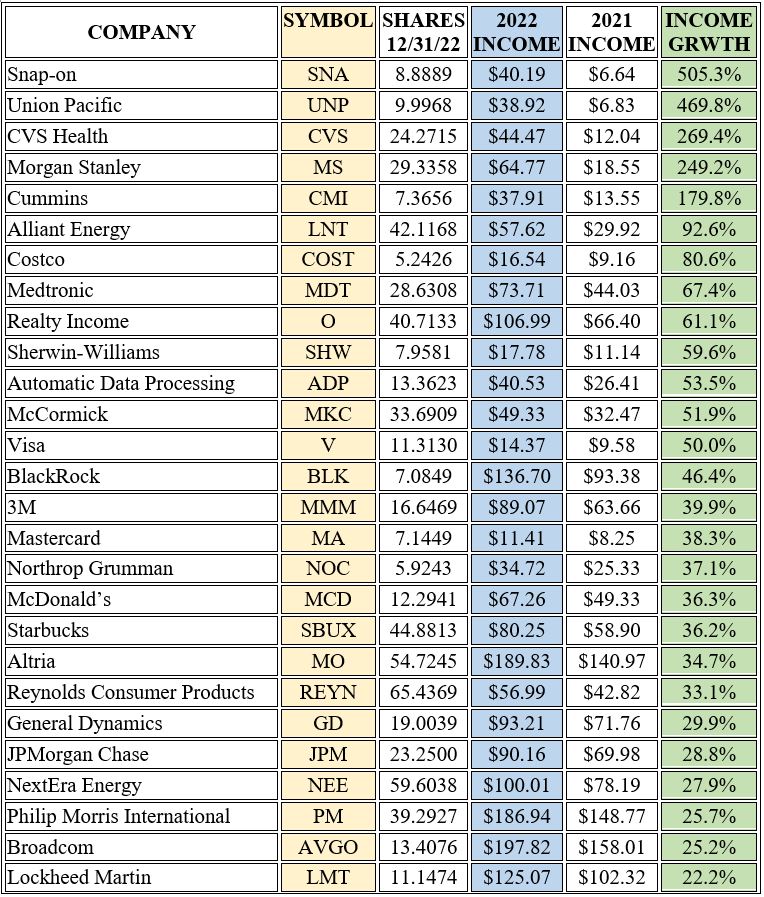
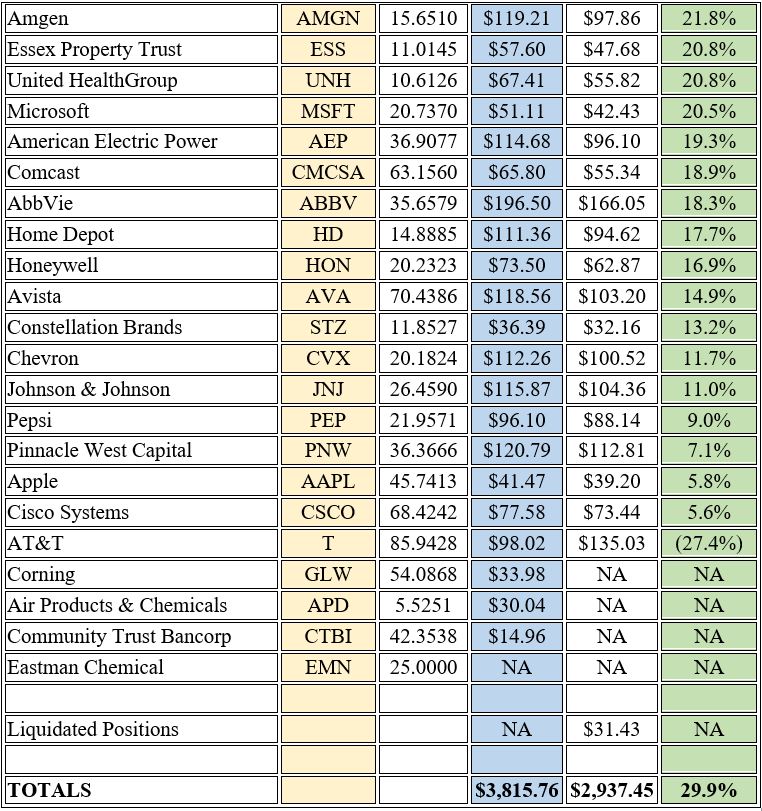
Those are not typos — the income stream actually grew 29.9%, and that’s after having surged 44% in 2021 and 74% the year before that. What seems incredible (bordering on impossible) is explained quite simply:
The IBP is an active, real-money endeavor; new cash is constantly coming in and being invested into companies that grow dividends year after year.
Unlike my colleague Dave Van Knapp’s fabulous Dividend Growth Portfolio, in which there have been no new contributions since its inception in 2008, the IBP receives $2,000 per month to invest (courtesy of this site’s founder, Greg Patrick).
That means we made about $24,000 in stock purchases in 2022 — as we did in 2021, and 2020, and 2019, and 2018. In addition, all dividends have been reinvested along the way — a process informally known as “dripping.” Beyond that, 46 of the 49 holdings increased their payouts in ’22, many by 10% or more, while 2 others maintained their dividends.
Ascending Income
As a result of all that, 13 IBP holdings generated increases of at least 50% in 2022, with 5 growing income at 100% or better clips.
The 2022 leader was commercial toolmaker Snap-on (SNA), with its ridiculous-looking rise of 505%. How did that happen?
Well, Snap-on first became part of the IBP on Nov. 8, 2021, when we bought about 4.7 shares. The portfolio received only one dividend payment in 2021, for just $6.64. During 2022, not only did we get (and reinvest) four quarterly dividends from SNA, but we also bought another share of the stock in January, another in June and two more in October. And finally, Snap-on announced a 14.1% dividend raise in November.
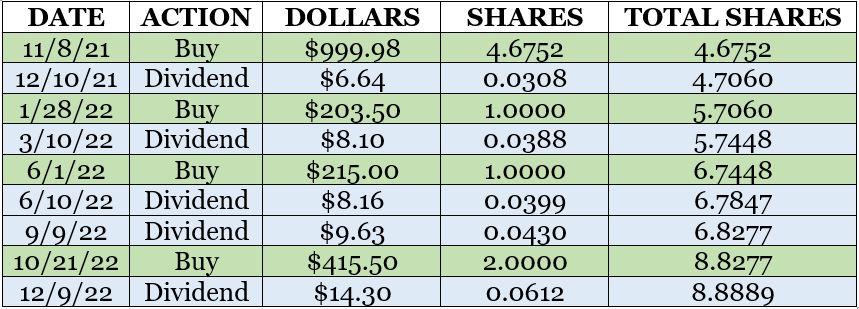
It all contributed to Snap-on paying the Income Builder Portfolio $40.19 in dividends in ’22 — a 505% increase from ’21.
Although that exemplifies how a Dividend Growth Investing practitioner can build a position’s income stream via stock purchases, dividend reinvestments and payout hikes, it’s an extreme example because four SNA dividends were received in 2022 as opposed to one the previous year.
A more typical case would be the IBP’s position in Home Depot (HD), which was built through $1,000+ buys in each of 2018 and 2019, and a smaller purchase in 2020.
Because no “new” money went into HD in either ’21 or ’22 and because the position paid four dividends into the portfolio in each year, it’s easier to make an apple-to-apples comparison. The income received went from $94.62 in 2021 to $111.36 in 2022 — a sweet 17.7% increase that was fueled by Home Depot’s double-digit-percentage dividend raise each year.
Whether we’re talking about Home Depot, Snap-on, or any of the IBP’s 47 other holdings — including the only three stocks added during 2022: Corning (GLW), Community Trust Bancorp (CTBI) and Eastman Chemical (EMN) — the big table near the top of the article illustrates something important about consistently investing in general and the DGI strategy in particular:
In an active portfolio – one in which funds are still flowing in, stocks are still being bought, and dividends are still being reinvested – an income stream can grow splendidly.
What About Total Return?
Another nice thing about DGI: It doesn’t prevent an investor from also experiencing excellent total return. That was demonstrated clearly by the Dividend Growth 50, a public, real-money project I’ve run for 8 years.
Many Income Builder Portfolio positions also have seen superior total return. Here are the IBP’s leaders:

SimplySafeDividends.com
Notable on that list: Chevron (CVX).
Through 2020, the oil giant had been the portfolio’s biggest laggard, with a total return of minus-22.3%. But as its industry recovered, so did Chevron’s earnings, revenue and cash flow. Its stock price followed, its dividend grew, and CVX has crushed the overall market in total return the last two years.
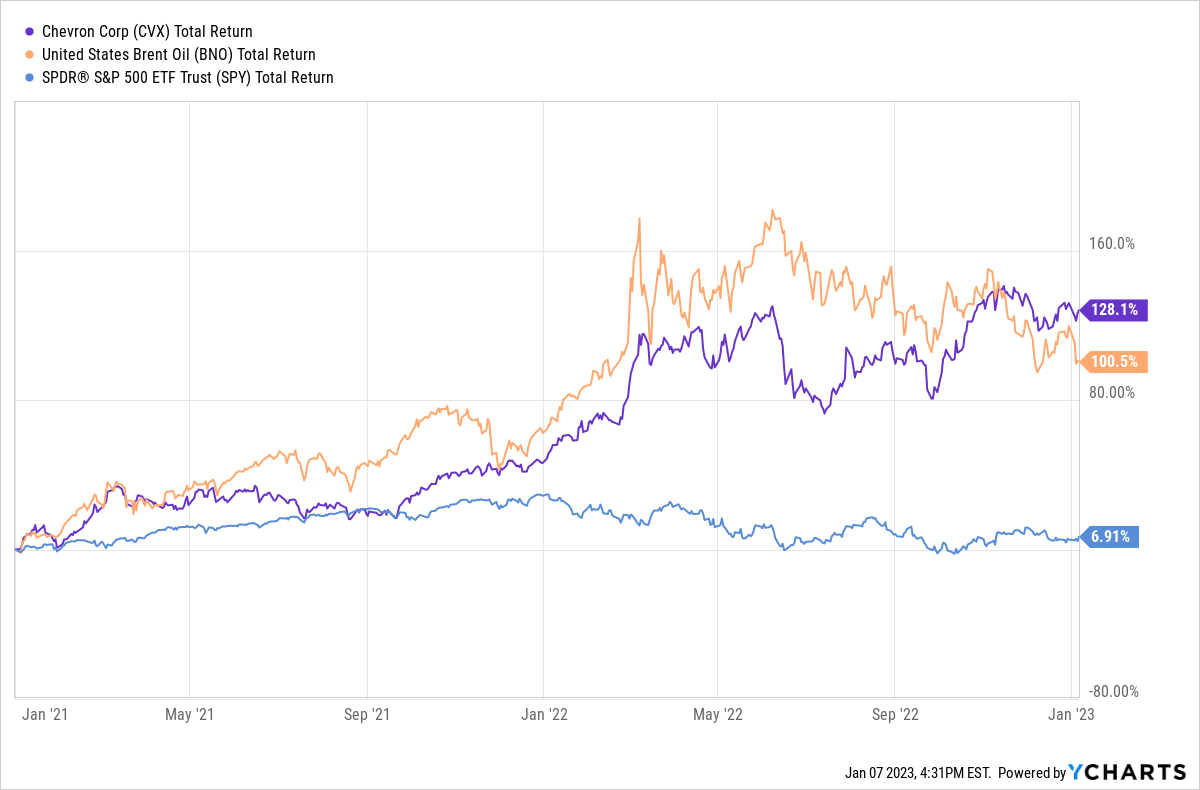
A lot of investors concentrate on creating total return, and it does matter to many DGI practitioners, too. Still, the IBP’s primary goal, as stated in its Business Plan, is to “build a reliable, growing income stream by making regular investments in high-quality companies, most of which have a track record of paying and increasing dividends.”
Here is another table with more income-related information, with all data accurate through Dec. 31, 2022:
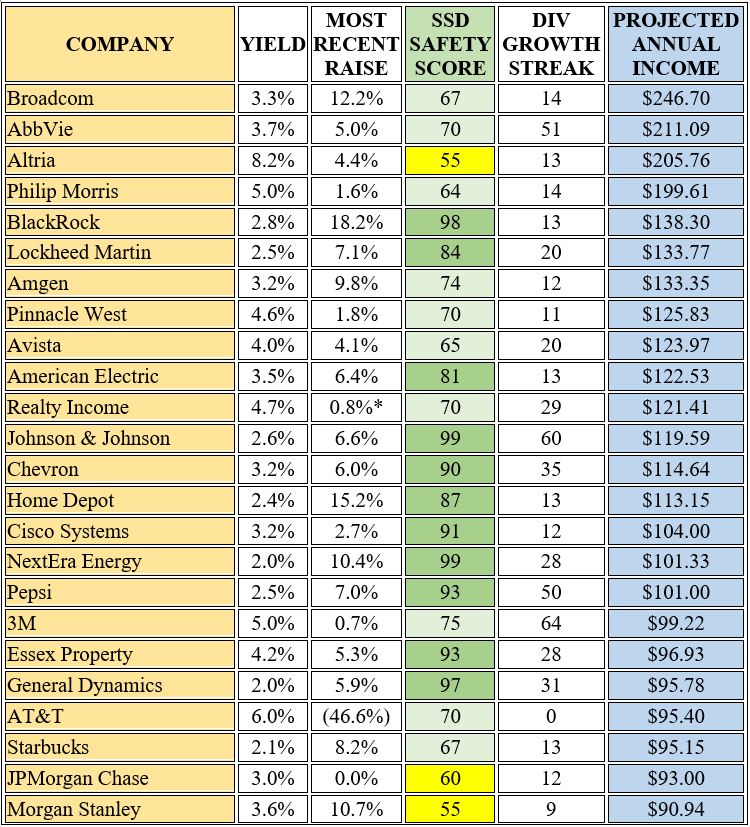
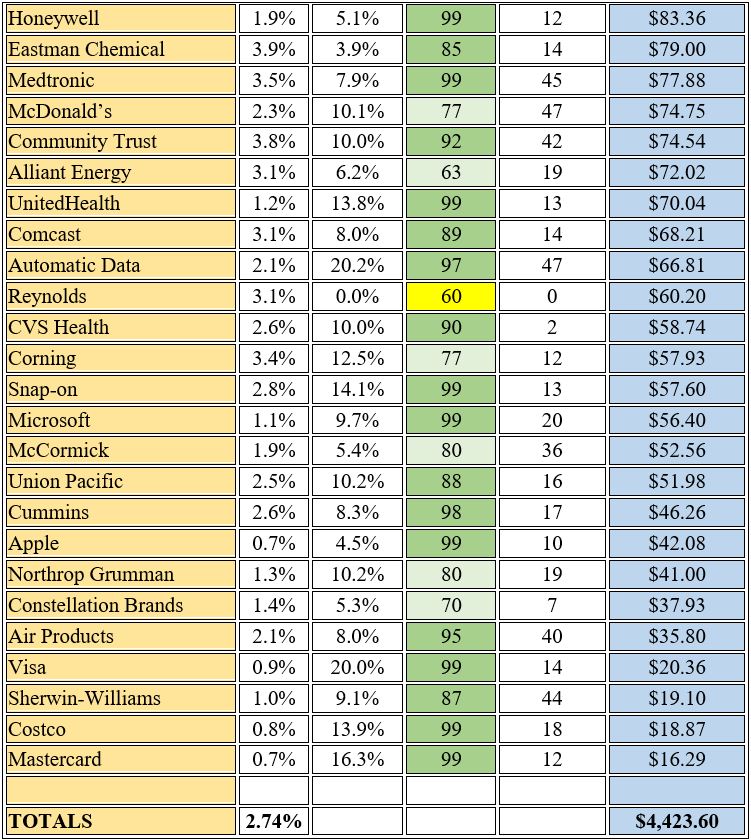
The largest dividend raise for any IBP holding in 2022 was turned in by Automatic Data Processing (ADP), at 20.2%, followed by Visa (V) at 20% and BlackRock (BLK) at 18.2%.
Three companies in the portfolio did not declare dividend increases last year: JPMorgan Chase (JPM) and Reynolds (REYN) froze their payouts; and AT&T (T) cut its dividend by 46.6% (after spinning off Warner Bros. Discovery).
Realty Income (O) announced several tiny increases that added up to only 0.8% — frankly, a little disappointing for a real estate investment trust that bills itself as The Monthly Dividend Company. Still, that’s 29 straight years of hikes for the Dividend Aristocrat, one of the longest streaks of any REIT.
Simply Safe Dividends, which calculates “safety scores” for more than 1,300 companies, says that 90% of the Income Builder Portfolio’s components have either “very safe” or “safe” dividends.

SimplySafeDividends.com
Four IBP stocks had their scores upgraded last year: Chevron, from 65 to 90; CVS Health (CVS), from 67 to 90; AT&T, from 40 to 70; and Constellation Brands (STZ), from 67 to 70. The only downgrade saw American Electric Power (AEP) go from 99 to 81 — but even 81 is still in the “very safe” zone.
Taking Aim At Our Target
The last column of the income-related information table shows each position’s Projected Annual Income. To arrive at that figure, I multiply a company’s most recently announced quarterly dividend by 4 to get a yearly per-share payout (or by 12 months in Realty Income’s case), and then multiply that by the number of shares.
Using IBP leader Broadcom (AVGO) as an example:

Overall, the portfolio’s projected annual income was $4,423.60 at the end of 2022. That puts the IBP nearly 90% of the way toward the Income Target established at its inception in 2018: $5,000 within 7 years.
Given that we have not yet even made our first investment of Year 6, we obviously are well ahead of the pace we need to get there. I estimate the the IBP will hit the $5K target this summer at the latest. At that point, we’ll conclude the Income Builder Portfolio project.
Wrapping Things Up
The IBP’s overall yield was 2.74% at the end of 2022. That’s up from about 2.4% a year earlier, as a broad market pullback hit the prices of most stocks.
For some DGI practitioners, 2.74% is plenty; indeed, that’s higher than my personal portfolio yields. Others want 3.5%+ or even more. That’s an individual choice — as are number of holdings, sector weightings, quality scores, beta, and all kinds of other metrics.
It’s important to remember that we never aimed to convince fellow investors to replicate the IBP. From Day 1, we’ve always been about discussing the process of portfolio building and about presenting interesting investing candidates for further research.
So far, so good … and we’re not done quite yet.
For more information about the Income Builder Portfolio, including links to every IBP-related article I’ve written, check out the home page HERE.
— Mike Nadel
Start Collecting Daily Dividend Checks [sponsor]After researching income stocks for over 30 years, I've come up with a one of a kind dividend portfolio. With the right 20-30 stocks, you can collect a dividend check every single day the market is open. That's over 260 dividend checks per year. Click here for the names of these 20+ stocks.
Source: Dividends & Income


